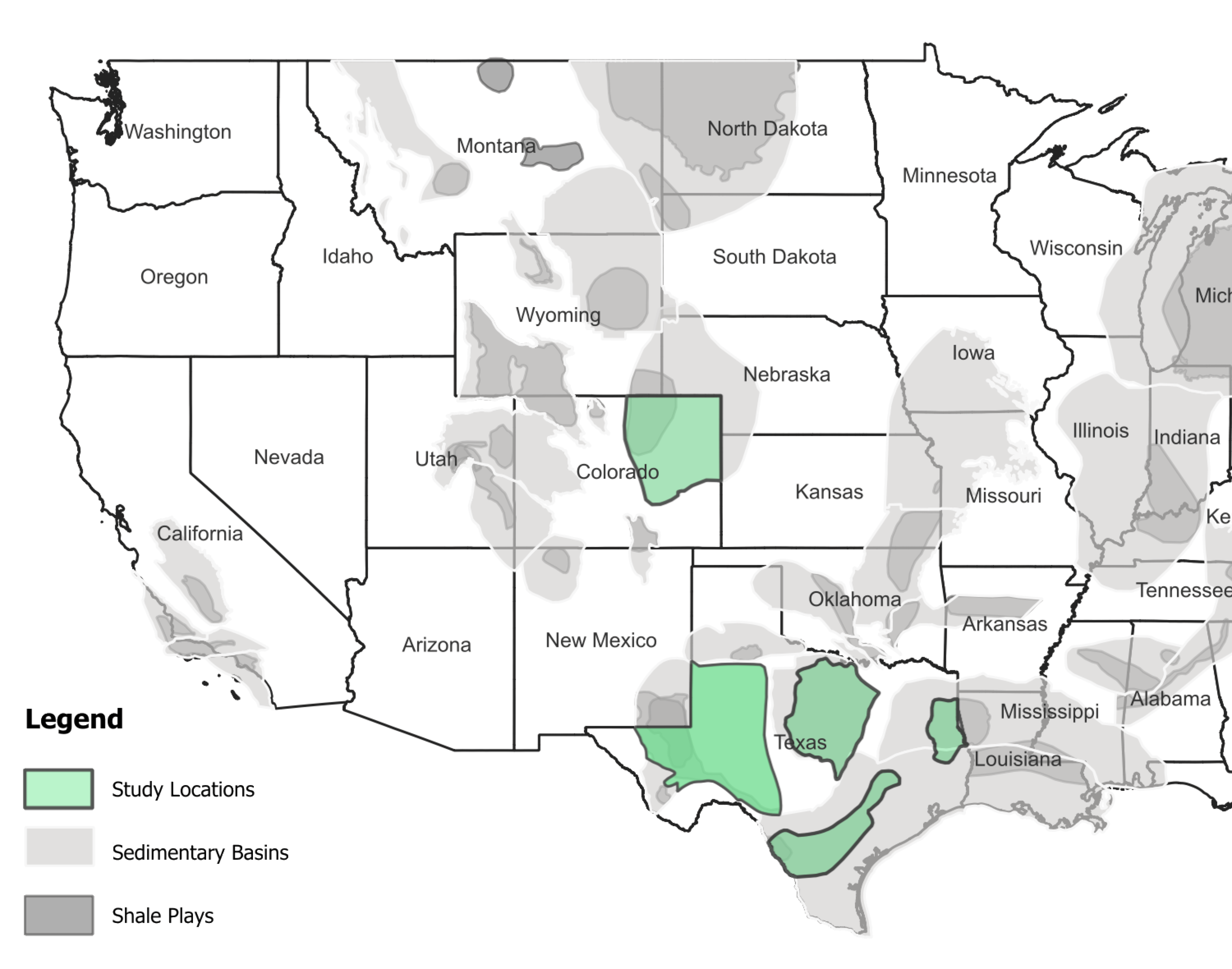Air Quality Trends in Texas and Colorado Associated with Unconventional Oil and Gas Development
The study is complete and now undergoing peer review and an independent quality assurance/quality control audit before HEI Energy releases the research report in the first part of 2026.
The overall goal of this study is to determine trends in the atmospheric concentrations of methane and non-methane hydrocarbons at eleven locations in the Haynesville, Eagle Ford, Barnett, and Permian regions of Texas and six locations in the Denver-Julesburg region of Colorado. The research team is using air quality monitoring data that date back as far as 1997 at one of the Texas locations, including:
- Texas Commission on Environmental Quality ambient air quality data collected in proximity and downwind of oil and gas production.
- Air quality data from the Colorado Department of Public Health & Environmental, the National Oceanic and Atmospheric
- Administration, and from a Northern Colorado Front Range Regional Government Coalition.
- Satellite-based measurements of formaldehyde above the Permian basin as a proxy for non-methane hydrocarbon emissions in the last 10 years.
The research team is separating long-term trends from seasonal and other short-term variations and is seeking to understand whether any observed trends are the result of changes in oil and gas operations or significant disruptions such as the COVID-19 pandemic shutdowns in 2020.



